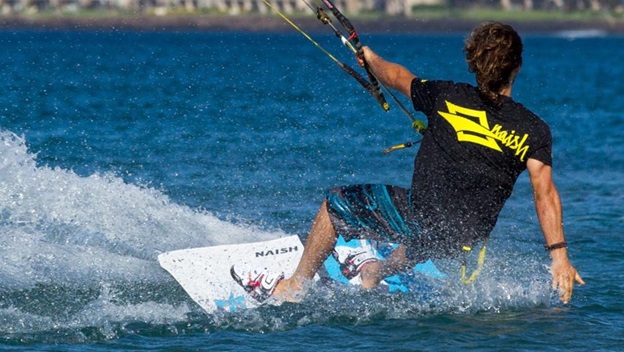What kitesurf equipment do you need?
Kitesurfing is all about the equipment! Because of recent safety improvements, it is important that your school has quality equipment. You should be able to choose from a variety of boards and kites that are suitable for your needs. You should also be able for them to supply equipment that can withstand more severe wind conditions. You will need the following equipment during your lessons:
- Board
- Helmet
- Life jacket
- Kite:The kite is the wing that pulls you along the water and allows you to ride. There are many sizes and shapes of kites depending on wind conditions and your style.
- Bar: Most of the time, the bar has 4 to 5 lines that connect to the kite. These lines allow you to steer your kite to either the right or the left (and move to the left and to the right).
- Harness There are two types of harness. The first is the seat harness. This harness is often used by beginners kite schools because it sits lower than the waist harness. It has the main body wrapped around the hips of the kiter. The waist harness is also available, but does not include leg straps. It is more suitable for jumping.
- Safety Leash The safety leash that attaches to your harness is the most essential piece of equipment. The leash is not part of your harness. It connects to your harness and the bar at the so-called chicken loop. This safety system is vital and will be explained to you by your instructors.
- You will need a wetsuit for comfort. If your school offers it, make sure you ask.
Once you are confident in the navigation of your kite on land you can get your board and start to take your first steps on the water. You might even make your first jumps soon, who knows?
This post was written by Aaron McClearnon, Owner of Elite Watersports. At Elite Watersports, We strive to provide exceptional service and genuine interactions with those interested in Kiteboarding Dunedin. We hold dear our passion for being out on the water and maintain this as our foundation for all business practices.


Comments are closed.